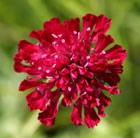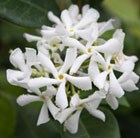Plants of the Month from Crocus
by Diane - July 13th, 2012.Filed under: Crocus.
Really lovely July plants – order now from Crocus. great quality plants.

Lavandula angustifolia ‘Hidcote’ (lavender Hidcote promotion – 6 pack) £14.97
Position: full sun Soil: moderately fertile, well-drained soil Rate of growth: average Flowering period: July to September Hardiness: fully hardy A compact form of the popular English lavender, named after plantsman Laurence Johnston’s famous Arts and Crafts garden in Gloucestershire. It produces dense spikes of fragrant, deep violet summer flowers above slender, aromatic, silvery-grey leaves. It is possibly the best lavender for edging paths and borders and the aromatic foliage perfumes the air if you brush against it. It also works well in a gravel garden, or clipped into a formal sphere for a contemporary look. The flower-spikes are highly attractive to bees and other nectar-loving insects. Garden care: Cut back the stalks after the flowers have faded. Carefully trim back in April, taking care not to cut into old wood.

Knautia macedonica ‘Mars Midget’ (knautia) £7.99
Position: full sun Soil: moderately-fertile, well-drained, preferably alkaline soil Rate of growth: average Flowering period: July to September Hardiness: fully hardy Deep crimson, pincushion-like flowers appear on slender stems from July to Septe mber. This is a dwarf variety of the popular perennial that is more compact, bu t still has good-sized flowers that grow up to 5cm (2in) across and will bring long-lasting colour to a mixed or herbaceous border. It’s best planted in well -drained, soil in full sun and supported with twiggy pea sticks. Although it pr efers alkaline soil, it will thrive in neutral soil, too. It is a magnet for be ees and butterflies. Garden care: Support with twiggy pea sticks or brushwood well before the flowers appear. Cut down to the ground in autumn. This plant is susceptible to powdery mildew. To help prevent this, mulch well with rotted manure or compost in autumn and keep it well watered.

Erigeron karvinskianus (Mexican fleabane) £4.99
Position: full sun Soil: fertile, well-drained soil Rate of Growth: average Flowering period: June to October Hardiness: fully hardy Masses of small daisies, emerging white, then turning pink, with yellow centres, give this plant an unusual, two-tone effect. It has a long flowering period, from May to October, and is amazingly versatile, being low-growing, happy in su sun or partial shade and thriving in any well-drained soil. It’s also tolerant of coastal conditions. Try it as an edging plant in a mixed border, alongside paths, in a gravel garden, spilling over walls, or planted in the cracks in paving. Bees and butterflies love all erigerons, so they make a wonderful addition to a wildlife garden, too. Garden care: Trouble free. Cut back the flowered stems to ground le vel in early spring. Lift and divide large clumps every second or third year, d iscarding the woody crowns.

Penstemon ‘Apple Blossom’ (beard tongue) £7.99
Position: full sun or partial shade Soil: fertile, well-drained soil Rate of growth: average Flowering period: July to October Flower colour: pale pink Hardiness: frost hardy (will need winter protection in cold areas) Clusters of small, white-throated, pale pink, bell-shaped flowers appear for several months from midsummer above the mounds of mid-green foliage. This pretty perennial is perfect for the middle of a sunny, mixed or herbaceous border, where it will mix happily with richer pinks, white and most shades of blue or purple. For the best results chose a well-drained site as it strongly dislikes waterlogged winter soils. Garden care: Remove the faded blooms regularly to prolong flowering. Apply a dry mulch around the base of the plant to protect the roots from frost damage and cut back in spring when new shoots appear low down on the stem. Lift and divide congested clumps in spring.

Trachelospermum jasminoides (star jasmine) £19.99
Position: full sun Soil: fertile, well-drained soil Rate of growth: average Flowering period: June to August Flower colour: white flowers Other features: very fragrant flowers Hardiness: frost hardy (needs winter protection) An attractive woody, evergreen climber with rich, dark green leaves which turn bronze in winter. Clusters of fragrant, pure white flowers are produced from mid- to late summer. It is best grown against a warm, sunny wall in milder areas or in a greenhouse or conservatory in areas prone to severe frosts. Garden care: After flowering has finished prune back to fit the available space. In frost prone areas, grow in pots of loam-based potting compost, such as John Innes No2 and move to a frost-free spot in winter.

Geranium Rozanne (‘Gerwat’) (PBR) (cranesbill) £7.99
Position: full sun or partial shade Soil: fertile, well-drained soil Rate of growth: fast-growing Flowering period: June to October Flower colour: violet-blue Hardiness: fully hardy Each lavender-blue, saucer-shaped flower grows up to 5cm across, and has a white eye with purple veining. A spreading form, it looks wonderful in naturalised planting schemes, where it provides fast-growing ground cover, and will flower from early summer to mid-autumn. Garden care: In midsummer rejuvenate plants that are beginning to look jaded, by removing old flowered stems and leaves. Lift and divide large colonies in spring.






